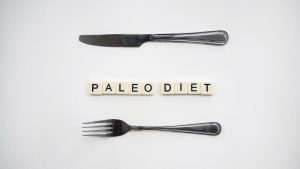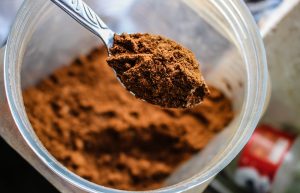Foods To Avoid For A Flat Tummy
 It’s summer. The hunt for the elusive flat tummy starts again. The microwear of summer turns up the intensity of the search. Two things can help diet and exercise. A healthy diet helps in two ways. It can help you lose subcutaneous and visceral fat. You can also focus on foods to avoid and ones that help you achieve your goal to have abs you’ll be proud to show off.
It’s summer. The hunt for the elusive flat tummy starts again. The microwear of summer turns up the intensity of the search. Two things can help diet and exercise. A healthy diet helps in two ways. It can help you lose subcutaneous and visceral fat. You can also focus on foods to avoid and ones that help you achieve your goal to have abs you’ll be proud to show off.
Eliminate highly refined, high-carb foods.
What puts inches around your middle and a few scoops of fat on your tummy? Simple carbs are the answer. You probably have a weakness for many foods in that category. Freshly baked bread, donuts, cookies, cake, candy, pizza, and bagels contain processed simple carbs. If you want a flatter stomach, skip the simple carbs and focus on protein and complex carbohydrates. Choose whole-grain bread instead of white bread. It has more nutrients and keeps you feeling full longer. Cutting food with added sugar is hard, but it makes a huge difference. When you skip the sugar, you’ll notice weight dropping more quickly.
Don’t forget to include healthy fat and skip the special diet foods.
When people hear they should eat fat, they freak out. That doesn’t mean you eat the crispy fat off a steak or deep-fried food. Eat fatty foods like tuna, avocado, full-fat yogurt, or olive oil that contain the fat that helps you burn more fat. Eating more healthy fat and fewer simple carbs goes a long way to helping you shed belly fat. Fat is necessary to transport the fat-soluble vitamins A, D, E, and K.
Eat more soluble fiber foods.
Soluble fiber feeds your body’s beneficial microbes. The fiber changes to a gel when it mixes with water. That gel slows the absorption of sugar, so your blood sugar doesn’t spike. Without the fiber, sugar rushes to your bloodstream causing a spike in blood sugar followed by a spike in insulin. The massive increase in insulin makes changes that can cause an increase in belly fat. Soft drinks are one source of sugar content most people fail to recognize. Even if you drink sugar-free soft drinks, recent studies show they may put excess pounds around your midsection in the form of visceral fat, the most dangerous type of fat and the hardest to lose.
- Fruit juice seems healthy and contains many nutrients, but unlike the whole fruit, it doesn’t contain fiber. It’s full of natural sugar that spikes your insulin because of the lack of fiber. Switch to whole fruit and water.
- Add probiotic food to your diet to improve your gut microbiome. Probiotic foods include sauerkraut, yogurt, kefir, and kimchi. Eating fiber and other prebiotic foods helps build a healthy probiotic microbiome.
- Eliminating stress can help you shed belly fat. Stress hormones, like cortisol, are linked to belly fat. Exercise, adequate sleep, meditation or other relaxation techniques, and a healthy diet can help.
- Our personal trainers at Rising Fitness can help you with exercises to make your stomach flat and beach ready. They can help you with weight loss by showing off that new-found six-pack.
For more information, contact us today at Rising Fitness Gym



 It used to be easier when you looked for supplements. There were a few protein supplements, bottles of multivitamins, and some individual vitamins. Today, there are fiber bars, Elderberry gummies, and a vast array of protein supplements containing extra nutrients, including dried fruits and vegetables. It’s become a million-dollar business. Sometimes, the supplement is a waste and flushes out of your body. People with adequate vitamin C expel excess vitamin C in urine. Some vitamins or macronutrients are dangerous in large doses. Taking supplements may help or come with problems.
It used to be easier when you looked for supplements. There were a few protein supplements, bottles of multivitamins, and some individual vitamins. Today, there are fiber bars, Elderberry gummies, and a vast array of protein supplements containing extra nutrients, including dried fruits and vegetables. It’s become a million-dollar business. Sometimes, the supplement is a waste and flushes out of your body. People with adequate vitamin C expel excess vitamin C in urine. Some vitamins or macronutrients are dangerous in large doses. Taking supplements may help or come with problems.
 People in Houston, TX, have asked whether the paleo diet is as beneficial as some claim. It includes food that our ancestors might have consumed thousands of years ago. That immediately eliminates highly processed foods and foods and focuses on whole foods, which is a healthy step in the right direction. The Paleo diet, named after the Paleolithic era, includes food man ate when he first started to use tools. In that period, man was a hunter-gatherer. The premise is that eating what your ancestors ate provides food your body could easily digest. It eliminates many food items used today, like bread.
People in Houston, TX, have asked whether the paleo diet is as beneficial as some claim. It includes food that our ancestors might have consumed thousands of years ago. That immediately eliminates highly processed foods and foods and focuses on whole foods, which is a healthy step in the right direction. The Paleo diet, named after the Paleolithic era, includes food man ate when he first started to use tools. In that period, man was a hunter-gatherer. The premise is that eating what your ancestors ate provides food your body could easily digest. It eliminates many food items used today, like bread.
 If you’re cutting back on carbs or following a keto diet, you want to include the best low-carb foods and avoid the worst ones. Not all carbs are bad. It’s a misconception that often drives people to consume an unhealthy diet. Your body requires carbohydrates for energy. Some contain other nutrients necessary for a healthy body, while others are only empty calories, providing only energy and often containing unhealthy ingredients.
If you’re cutting back on carbs or following a keto diet, you want to include the best low-carb foods and avoid the worst ones. Not all carbs are bad. It’s a misconception that often drives people to consume an unhealthy diet. Your body requires carbohydrates for energy. Some contain other nutrients necessary for a healthy body, while others are only empty calories, providing only energy and often containing unhealthy ingredients.
 What is belly fat? Most people recognize it immediately. It’s often called a Buddha belly, a spare tire, or a muffin top. Its scientific name is visceral fat. It’s the hardest fat to eliminate. It’s also the most dangerous type of fat. It crowds the organs and affects your health. No matter what exercise you do, you can’t remove fat in just one place. It comes off the body in equal amounts. Some types of cardio are beneficial, but not necessarily the best exercise to reduce it.
What is belly fat? Most people recognize it immediately. It’s often called a Buddha belly, a spare tire, or a muffin top. Its scientific name is visceral fat. It’s the hardest fat to eliminate. It’s also the most dangerous type of fat. It crowds the organs and affects your health. No matter what exercise you do, you can’t remove fat in just one place. It comes off the body in equal amounts. Some types of cardio are beneficial, but not necessarily the best exercise to reduce it.
 Everyone has probably felt the 3 pm slump and looked for food that could supply more energy to get them through to the end of the day. You feel like your body’s energy is nothing more than a puddle beneath your feet. Often people reach for a sugary treat at this time, which is the worst possible choice. It does boost energy for a short time but then drops it even further into the abyss. Some foods help boost your energy and keep you going longer. Eating those foods during meals and as snacks can help solve the problem.
Everyone has probably felt the 3 pm slump and looked for food that could supply more energy to get them through to the end of the day. You feel like your body’s energy is nothing more than a puddle beneath your feet. Often people reach for a sugary treat at this time, which is the worst possible choice. It does boost energy for a short time but then drops it even further into the abyss. Some foods help boost your energy and keep you going longer. Eating those foods during meals and as snacks can help solve the problem.
 Walk into any health food store in Texas, and you’ll find a variety of protein supplements. Some show bulging muscles on the front of the can, while others are more subtle in their advertising. Are they beneficial? Should everyone take them? One point is that supplements, protein or otherwise, should never replace healthy eating. Protein supplements won’t replace a balanced diet. Using them to replace a healthy diet can and does negatively affect overall health. Supplements can benefit some people but can hurt the health of others.
Walk into any health food store in Texas, and you’ll find a variety of protein supplements. Some show bulging muscles on the front of the can, while others are more subtle in their advertising. Are they beneficial? Should everyone take them? One point is that supplements, protein or otherwise, should never replace healthy eating. Protein supplements won’t replace a balanced diet. Using them to replace a healthy diet can and does negatively affect overall health. Supplements can benefit some people but can hurt the health of others.
 People in Houston, TX, are learning that eating healthy can be quick, easy, and less expensive than fast food when you learn to meal plan. It helps people stick with healthy eating, and it’s faster than waiting in the drive-through line at the local Burger Quickie. Meal planning is a process. You create menus and a grocery list one day, shop another day, and cook a week’s worth of food on the weekend or your day off work.
People in Houston, TX, are learning that eating healthy can be quick, easy, and less expensive than fast food when you learn to meal plan. It helps people stick with healthy eating, and it’s faster than waiting in the drive-through line at the local Burger Quickie. Meal planning is a process. You create menus and a grocery list one day, shop another day, and cook a week’s worth of food on the weekend or your day off work.
 Starting the day with a big breakfast was often vital for early farmers who did hard manual labor. It is also vital for most workers who expend high amounts of energy doing their daily work. If you work in an office or a sedentary job, a big breakfast may offer benefits even though you don’t expend the high energy of a pioneer farmer or lift heavy loads that cause you to burn hundreds of calories.
Starting the day with a big breakfast was often vital for early farmers who did hard manual labor. It is also vital for most workers who expend high amounts of energy doing their daily work. If you work in an office or a sedentary job, a big breakfast may offer benefits even though you don’t expend the high energy of a pioneer farmer or lift heavy loads that cause you to burn hundreds of calories.
 What is BMI? BMI stands for body mass index and is a ratio of height to weight based on sex and sometimes age. It’s just one quick measure of your overall health. BMI is a chart with your height at the side, weight in the middle, and the corresponding BMI at the top of the chart. The BMI formula is (weight in pounds x 703) / (height in inches x height in inches). Putting the information on a chart cuts through calculation time and makes it easy for doctors to take a quick assessment. It’s not a stand-alone test and requires other information.
What is BMI? BMI stands for body mass index and is a ratio of height to weight based on sex and sometimes age. It’s just one quick measure of your overall health. BMI is a chart with your height at the side, weight in the middle, and the corresponding BMI at the top of the chart. The BMI formula is (weight in pounds x 703) / (height in inches x height in inches). Putting the information on a chart cuts through calculation time and makes it easy for doctors to take a quick assessment. It’s not a stand-alone test and requires other information.